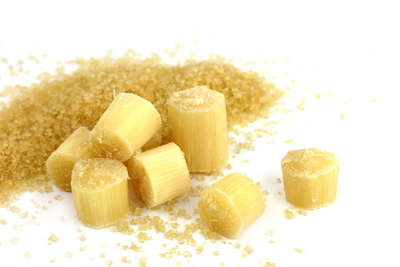Consumers in Uganda are growing cognizant with a marginal rise in foodstuff prices, especially sugar, which had bottomed out for months.
In May 2025, retail sugar has elevated from 3,800 to 4,500 Uganda shillings ($1.04-1.23) in various areas.
The rate is still below January 2024’s 5,000-shillings ($1.37)-a-kg that marked the start of a yearlong price fall.
Influential factors for the spike include a marginal increase in monthly headline and core inflation by 0.1 and 0.3%, respectively.
According to a May 2025 report by the Bank of Uganda, core inflation rose to 3.9% in April from March’s 3.6%. This is vis-á-vis headline inflation, which edged to 3.5% in April from 3.4% in March.
Geopolitical Influences
Current increases in Uganda seem to go against the grain, for worldwide pricing has been been trending downward this May.
Local prices follow worldwide geopolitical patterns, with projections showing global price pressure from upward output by the production leaders.
On May 6, the U.S. Department of Agriculture (USDA) upped India’s 2025-26 sugar production forecast by 26%, to 35 million tonnes. Brazil’s Conab also projected on April 29 that the 2025-26 output would increase by 4%, to 45.88 million tonnes.
This has pressured the price of white sugar to hug US¢17.42 a pound on May 20, in New York’s futures.
Similar global developments affected Uganda in 2024, when local economists blamed surplus by Brazil for low local pricing.
2024, a Consumer Year
In early 2024, consumers in Uganda gained a 500-shilling ($0.14) reprieve while cane farmers barely broke even at 170,000 shillings ($46.48) a tonne.
By July 2024, farmers were getting 140,000 shillings ($38.28) a tonne, down from July 2022’s 250,000 shillings ($68.35).
Retail rates had similarly fallen sharply to 3,300 shillings ($0.90) a kg, a far cry from 2021’s 7,000 shillings ($1.91).
Therefore, the latest slight spike in sugar prices in Uganda indicates domestic inflation for it does not echo global lows. The statistics below further explore the country’s general sugar production and pricing data.
Uganda Sugar Prices and Production Statistics
Uganda’s sugar industry is the biggest in East Africa for raw brown sugar. As early as the post-independence year of 1968, which generated 152,000 tonnes of raw sugar, there was self-sufficiency. Between 1980 and 1989, however, civil war derailed production and caused an import momentum. By 1990, Uganda had rebuilt major mills, especially the strategic Lugazi, which brought annual production back to 140,000 tonnes. Since then, raw cane sugar milling has grown six-fold, culminating in 2022’s 785,000 tonnes.
This burgeoning churning out of the sweetener has also helped make pricing fair, apart from the 1980s and Covid-19 years. During the pandemic in 2021, the retail rates had hit 7,000 shillings ($1.91) a kg, double late 2024’s 3,300 shillings ($0.90).
How is retail sugar pricing in Uganda by world standards?
Uganda has fairly moderate retail sugar prices by worldwide standards. According to Global Product Prices, while the world’s average is $1.52 per kg, Uganda’s is $1.38 (late 2024).
Is brown sugar production high in Uganda?
Uganda leads in brown granulated sugar in the East African Community (EAC) region, with an average 500,000 tonnes per year.
Below table, courtesy of FAOSTAT explores all Uganda sugar production status between 2019 and 2023.
| Year | Raw Sugar Production [tonnes] |
| 2023 | – |
| 2022 | 785,000 |
| 2021 | 664,000 |
| 2020 | 520,000 |
| 2019 | 482,000 |
How has cane production in Uganda performed in recent years?
Sugar cane harvests have been arguably rising annually in the most recent 5-year context. The data below by FAOSTAT tables cane production data for between 2019 and 2023.
| Year | Sugar Cane Production [tonnes] |
| 2023 | 6,189,665 |
| 2022 | 6,218,892 |
| 2021 | 5,900,000 |
| 2020 | 5,360,000 |
| 2019 | 5,550,000 |
